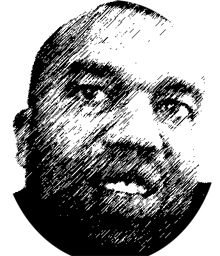It is no more according to Plato than according to me, since he and I understand and see it the same way. The bees plunder the flowers here and there, but afterward they make of them honey, which is all theirs; it is no longer thyme or marjoram. Even so with the pieces borrowed from others; he will transform and blend them to make a work of his own. His education, work, and study aim only at forming this. ~ Michel de Montaigne
The human race, in short, has had no important thought which it has not written in stone. And why? Because every thought, either philosophical or religious, is interested in perpetuating itself; because the idea which has moved one generation wishes to move others also, and leave a trace. Now, what a precarious immortality is that of the manuscript! How much more solid, durable, unyielding, is a book of stone! In order to destroy the written word, a torch and a Turk are sufficient. To demolish the constructed word, a social revolution, a terrestrial revolution are required. The barbarians passed over the Coliseum; the deluge, perhaps, passed over the Pyramids.
In the fifteenth century everything changes. Human thought discovers a mode of perpetuating itself, not only more durable and more resisting than architecture, but still more simple and easy. Architecture is dethroned. Gutenberg’s letters of lead are about to supersede Orpheus’ letters of stone. The invention of printing is the greatest event in history. In its printed form, thought is more imperishable than ever; it is volatile, irresistible, indestructible. It is mingled with the air.
Until recently, when thought entered the parallel world of cyber. Initially, nothing seemed much different; pages just sped up flying around for quick convenience. This time, though, they were launched from sites, not books or manuscripts. Since dusters barely altered, what took it on the chin were internals. Holding a kangaroo court in their imaginary nation, to an industry that has read its own obituaries countless times, tribesmen of the new order went for the coup de grâce, their lances high in the vacuum. Before my outdated brain could comprehend this paradigm shift, mediocrity went viral and airborne: people are gathering around quippy bonfires, as dusk turns into darkness and temperatures drop, and human body seeks human warmth.
Although Livy describes it as being tunneled out beneath Rome, he was writing centuries after the event. From other writings and from the path it takes, it seems more likely that Cloaca Maxima was originally an open drain, formed from streams from three of the neighboring hills, channeled through the main Forum and then on to the Tiber. The system then remained with not much progress until the 16th century, where in England, Sir John Harington invented a device for Queen Elizabeth (his godmother) that released waste into cesspools. However, many cities had no sewers and relied on nearby rivers or occasional rain to wash away sewage. In some, waste water simply ran down the streets, which had stepping stones to keep pedestrians out of the muck, and eventually drained as runoff into the local watershed. This was enough in early cities with few occupants, but their growth quickly over polluted streets and became a constant source of disease.
Growing up, I had to use an outer house. In order to get to it, I’d walk through the front yard, commercial yard, and a part of the garden. My roundtrips became an exercise in free thought, which for the naive reason of my youth I envisioned as a barely populated snow-capped mountain peak. Not to mention my imagination being unable to stretch beyond an old medieval craft typical of Central Europe. It is remarkable that the craft has survived, and you can still buy red leceder hearts, honey cookies, necklaces with a cross, little crucifixes and other ornaments – all made of dough.
Sitting above the round hole cut out of thick wood board and polished to perfection by bare bottoms of my ancestors – which for some funny reason reminded me of a misplaced halo, an indispensable content of any sanctity – I couldn’t even grasp the concept of sewage: all I knew was that crap stays where crap drops, petrified like eulogy and unable to spread thin by motion. Those were ‘one shot but you better make it good’ days, and I miss their substance, the gravitas of every drop I made. Come to think of it, what if the gravity itself was more forceful back then, before wearing itself out by entropy and caving in to speed.
One day, while cautiously climbing weathered wooden stairs leading to the attic – an oversized boy with a large, heavy head – I slipped and fell like a tombstone, landing straight on my crown. As soon as I hit the ground fear-frozen – after a brief vision of starry universe followed by session of weeping and whining – what shook me even harder was the sudden insight how quickly speed could evaporate, how deceiving and fragile is its beauty: nymphs’ song to willing ears of wasted sailors.
‘When I invented chaotic inflation theory, I found that the only thing you needed to get a universe like ours started is a hundred-thousandth of a gram of matter,’ Andrei Linde told me in his Russian-accented English when I reached him by phone at Stanford. ‘That’s enough to create a small chunk of vacuum that blows up into the billions and billions of galaxies we see around us. It looks like cheating, but that’s how the inflation theory works — all the matter in the universe gets created from the negative energy of the gravitational field. So, what’s to stop us from creating a universe in a lab? We would be like gods!’ In response, I offered him my thesis that gods must be crazy, since we already invented our cyber universe out of a single milligram of antithought.
Flipping this rusty bronze coin into a shiny banknote, ‘Ten Thousand Cents’ is a digital artwork that creates a representation of a $100 bill. Using a custom drawing tool, thousands of individuals working in isolation from one another painted a tiny part of the bill without knowledge of the overall task. Workers were paid one cent each via Amazon’s Mechanical Turk distributed labor tool. The total labor cost to create the bill, the artwork being created, and the reproductions available for purchase (to charity) are all $100. The work is presented as a video piece with all 10,000 parts being drawn simultaneously. The project explores the circumstances we live in, a new and uncharted combination of digital labor markets, ‘crowd sourcing,’ ‘virtual economies,’ and digital reproduction.
In his book ‘7000 days in Siberia’, Karlo Štajner – Tito’s komrad since Moscow days in the thirties, when singing L’ Internationale had the same cheerful effect as a six-pack of Löwenbräu today, and Babel was given a villa in the writers’ colony of Peredelkino – who spent 20 years in Soviet gulags between 1936 and 1956, has described Soviet concentration camps as a nightmare even the greatest writer could not portray (sic!). He said Solzhenitsyn had not experienced even a part of what he, Štajner, had in the Soviet gulags. ‘Aleksandr Isayevich was not sent to the distant, cold areas but was imprisoned in camps near Moscow, in the so-called Yellow Home, a camp for internet intellectuals (oops, a typo: interned). Of course, the prisoners there also suffered, they did not enjoy their stay there, but their sufferings cannot be compared with those we experienced in the far north, under inhuman climatic conditions… I mention these examples in connection with Solzhenitsyn because Soviet citizens were not able to notice the changes that had taken place (after World War II), but I noticed them.’
But upon reflection, knowing the new theory of fundamental nature of the universe is just learning more physics. And while intriguing, this is not like proving scepticism to be true. David Chalmers contends that there is still a ‘physical world’ which we interact with; what is different, its fundamental physics is not strings and particles, but bits. Furthermore, learning that there is a creator outside of space and time who allowed our minds to interact with physical world, while obviously of great metaphysical and personal import, it is akin to learning that a particular religious view holds. This would be an earth shattering revelation, but it doesn’t mean we are not situated in the external world we believe we’re in.*
—
- My only comment to the above story is not mine. It belongs to a Dutch genius who happened to be an artist. Berndnaut Smilde creates clouds using a smoke machine, combined with indoor moisture and dramatic lighting to create an indoor cloud effect and take surreal shots worth Dali.
—
© George Djuric
George Djuric is a former rally racing champion, master chess player, taxi driver, street fighter, student of anti-psychiatry and philosophy, broker with Morgan Stanley… and a writer all the way. Published a critically acclaimed collection of short stories that altered Yugoslav literary scene – ‘The Metaphysical Stories’ – was dubbed Borges of the Balkans, as well as reborn Babel. Djuric infiltrates flashes from his vivid past into fictional alchemy for the salient taste of the 21st century.
—









